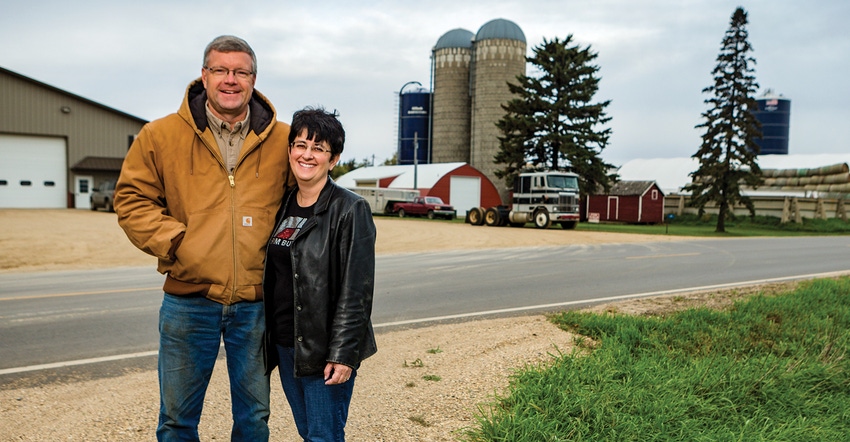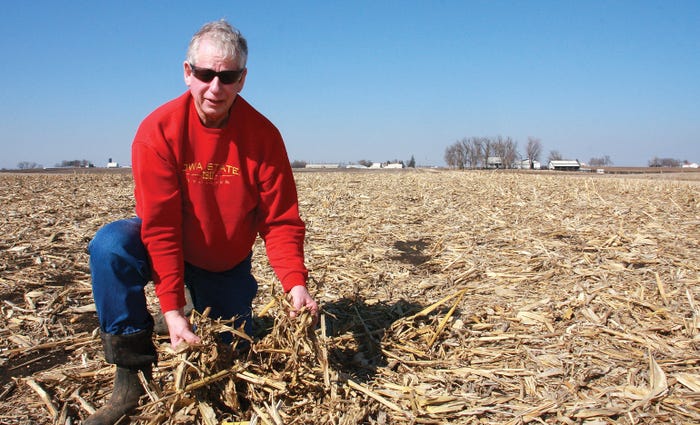
Nimble farmers shave costs where they can to keep production costs in the black. In 2018, USDA projected production expenses up 3.3% at $11.8 billion from 2017, after leveling off since 2015.
Tried and tested by farmers, here’s a look at eight ways farmers are readjusting their business cost structure.
1. Analyze and re-evaluate insurance coverage. Each year at tax time, Lake City, Iowa, farmer Dwight Dial does a self-assessment of his insurance coverage to ensure he’s getting the most for his money. Each category of farm expenses is compared to previous years.
“Insurance costs seem to continue to be a major increase for me,” Dial says. “I meet with my insurance agents annually to assess my charges, whether it be for crop, farm, liability or health. As my situation is always changing due to my age, farming operation and health status, I always find it pays to re-evaluate my plans. We are always able to improve my plans and often realize a cash savings.”
Changes you make to your operation can also save on insurance. Having a security system for your home, an alarm system for your hog buildings or a standby generator can reduce liability costs.
2. Generate your own electrical power. Thanks to state and federal tax incentives, Dial installed a 40-kilowatt solar-generated power system in July. A federal income tax savings of 30% is available for systems put in place before Dec. 31, 2019. A 15% Iowa income tax savings is good for 10 years. The system is also eligible for the usual depreciation taken on farm equipment. It’s warranted for 25 years, at which time it is guaranteed to be operating at 82% of original capacity. He also qualified for a $10,600 federal grant.
“The costs savings in the first 17 days of use resulted in a 75% savings in my monthly electrical bills over the previous two months,” he says. “At current rates, it should reduce my annual farm expense for power by roughly $9,000 to $10,000.”
Dial says before adding a solar-powered system, make sure your current power provider supports alternative energy and you can “bank” excess power daily. That way, at the end of a year, you are given credit for energy produced in excess of energy used every day.
“This is a prerequisite to making a system like mine financially possible,” he says. “The payback time frame on mine is 3½ years. A far cry from the original 20-year time frame just a few years ago.”

Iowa farmer Dwight Dial cut back on what used to be two tillage practices per cropping season, which saves $30 an acre in fuel and machinery costs.
3. Renting marginal land? Walk away. Brian Wallace farms roughly 900 acres of corn and soybeans near Garden City, Minn. He recently gave up 300 acres he’s been renting for 25 years. Unlike most of his heavy black ground, this field would have blowing sand under strong winds and drowned-out areas under heavy, continuous rain. Even with last year’s record yields on the field, he still struggled to break even.
“I think I’ve actually only gotten a crop on all tillable acres three times in those 25 years,” he says. “When this winter didn’t quit and spring was late, everything I did up there seemed to be mud or wet.”
Despite having great landlords, he says being close to retirement age eased the decision to walk away from an ongoing economic drain.
4. Look at stacked seeds carefully. Scott VanderWal, who farms 1,300 acres of corn and soybeans, and operates a beef cattle feedlot in Volga, S.D., says he’s saved by getting away from stacked traits. He’s opted to use varieties with fewer traits and apply his own insecticide as needed. In the end, it saved money without sacrificing yield.
5. Eliminate storage costs by forward-contracting grain. Forward-contracting grain before harvest has helped Dial avoid commercial storage charges at the local co-op. He now uses several tools to sell his grain and isn’t caught having all his grain going into one sale window.
“After the disastrous marketing years of 2015 and 2016, I knew it was time to get away from storing grain commercially,” Dial says. “It was a no-win situation. The grain markets didn�’t pay to store grain in hopes of realizing a carrying charge over and above the commercial storage rates.”
6. Capitalize on conservation efforts. Dial started no-tilling his farm in the 1980s to improve his net farm income. “Through many trials and much questioning of one’s self, this has proven to be the best change to my farming operation I have made,” he says.
With no-till, Dial has reduced costs on chemical inputs, fuel and machinery, as well as loss of soil and nutrients. He hasn’t added any tillage machinery since he started farming in 1978. “Fuel savings on our operation were reduced by 50% due to the reduction in tillage and resulted in two fewer trips across the field,” he says. Each tillage pass eliminated has saved close to $15 per acre.
In 2010, he began adding cover crops to enhance his acres in the USDA Conservation Security Program. Now he uses cover crops on 75% of his farmland.
“Since I really became serious about utilizing cover crops, the greatest benefit I have seen is the reduction in herbicide costs,” he says. “This year I was able to reduce the amount of herbicides used both at the burndown and preplant stage, as well as the post lay-by stage in cornstalk ground going to beans. The excess cover of plant material from the cover crops seems to control weed seedling growth prior to drilling my soybeans and again prior to canopy. The reduction in chemicals applied saved me over $30 per acre in herbicide costs.”
7. Reduce excess fertilizer. Dial lives in a watershed identified as a source of excess nitrogen for neighbors downstream. Knowing any loss of soil or soil fertility comes with a major financial hit, he’s taken steps to understand his soils better.
“Utilizing the Soil Health Partnership study, grid-sampled soil test results, recommendations from current soil and crop studies, and reports, I have cut back on just annually applying large amounts of fertilizer and adjusted inputs based upon soil test results for my needs,” he says. “This wasn’t something that just started as a management process but has rather evolved over time as times have changed. The idea that we do what our forefathers did before us doesn’t always work in today’s agriculture.”
8. Assess machinery fleet. Dial learned from his dad that new paint doesn’t necessarily mean more bushels, recalling times in the ’80s when duct tape, bailing wire and prayers kept some machinery running.
“I try to trade before the equipment has no resale value,” he says. “I trade up, in some cases as much as four generations of some models. The equipment will have low hours, and it will come to me completely gone through, repaired and under warranty for at least the first year.”
As a result, Dial carries no machinery debt and pays cash for replacements. “After returning to farming in 1978 and living through the crisis of the ’80s, I vowed never to be a slave to the banks ever again. If you can’t afford it, and your current line of machinery works, stay out of debt.”
About the Author(s)
You May Also Like






